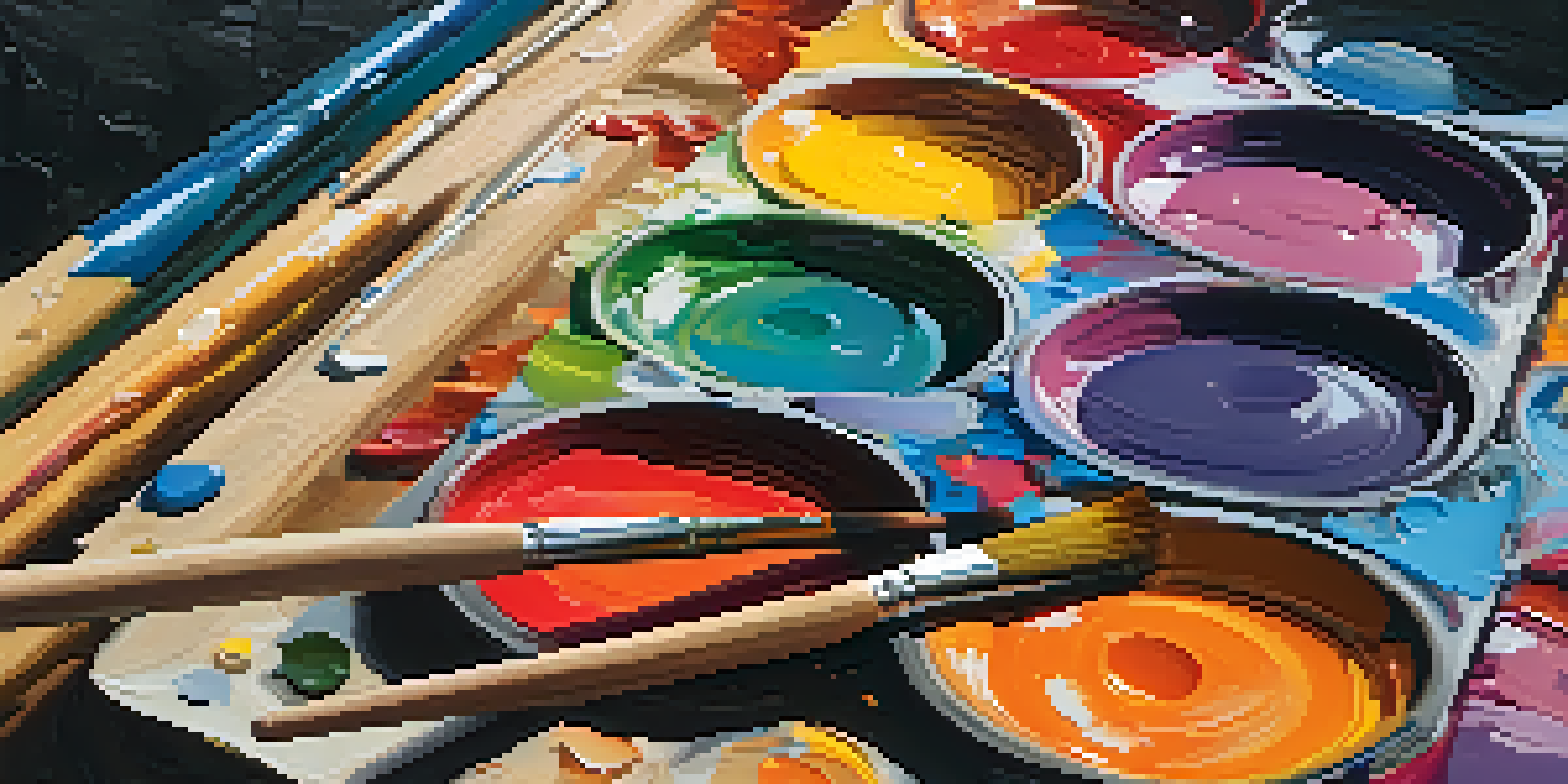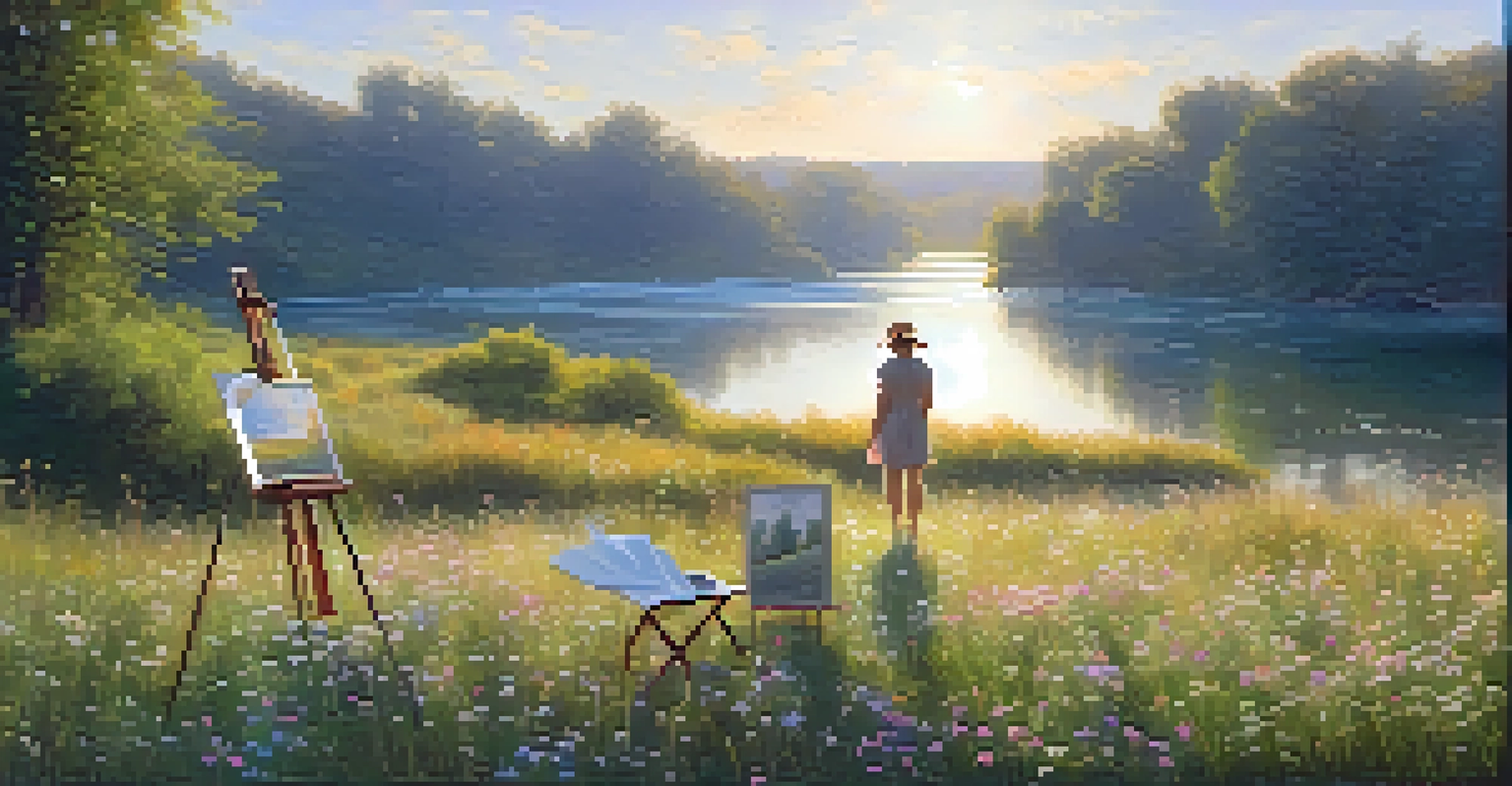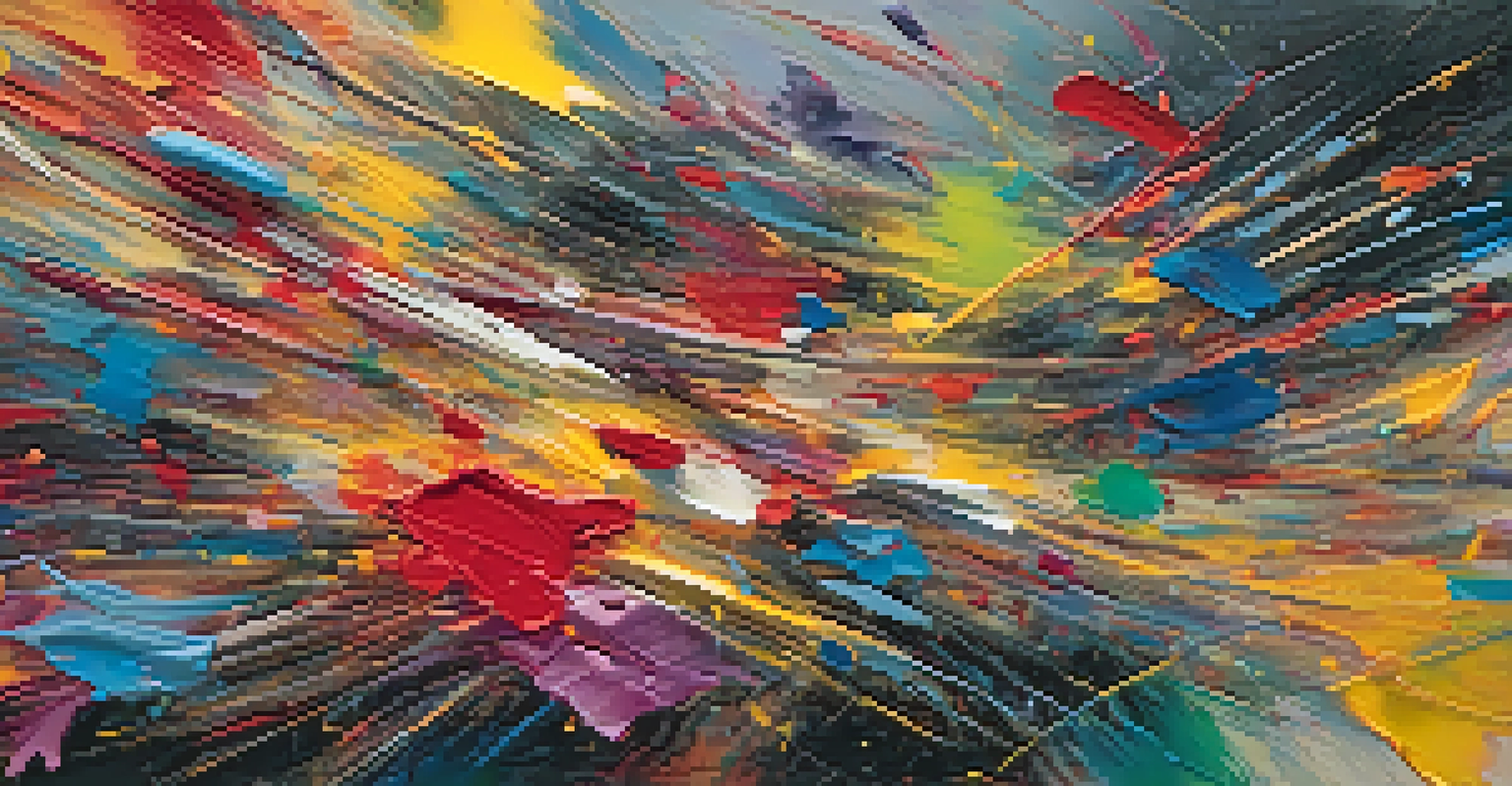The Role of Technique in the Creation of Meaningful Art

Understanding Technique in Art Creation
Technique in art refers to the methods and skills artists use to create their work. This can encompass everything from brush strokes in painting to the way materials are manipulated in sculpture. Understanding these techniques is crucial, as they form the foundation upon which artists build their expressions and ideas.
Art is not freedom from discipline, but disciplined freedom.
For instance, a painter may choose to use impasto—a technique where paint is laid on the canvas thickly—to add texture and depth to their work. This choice not only affects the visual outcome but also conveys emotion and intensity, allowing the viewer to engage with the piece on a deeper level. The relationship between technique and emotional expression is what often distinguishes impactful art from mere decoration.
Related Resource
Ultimately, mastering technique enables artists to communicate their visions more effectively. Whether it’s the precision of a woodworker or the fluidity of a dancer, technique serves as a bridge between the artist’s intent and the audience's perception.
The Intersection of Technique and Creativity
While technique provides structure, creativity breathes life into art. It's the spark that inspires an artist to take a familiar method and twist it into something unique and personal. When these two elements—technique and creativity—come together, they create a powerful synergy that can lead to extraordinary works of art.

Take, for example, the works of Vincent van Gogh. His mastery of color and brushwork showcases technique, but it’s his innovative approach to emotion and movement that brings his pieces to life. This blend of skill and originality is what invites viewers to see the world through his eyes, making his art feel both personal and universal.
Technique Shapes Artistic Expression
Mastering various techniques allows artists to effectively communicate their visions and emotions through their work.
Ultimately, the interplay between technique and creativity is what allows artists to push boundaries and explore new forms of expression. By mastering their tools, they can experiment and innovate, leading to art that resonates on multiple levels.
How Technique Influences Viewer Perception
The technique used in a piece of art significantly influences how viewers perceive its meaning. Different techniques can evoke various emotions and responses, shaping the narrative that unfolds within the viewer's mind. For instance, smooth, flowing lines might suggest calmness, while jagged, harsh strokes may evoke tension or chaos.
Creativity takes courage.
Consider the dramatic contrast between Impressionism and Cubism. Impressionists like Monet use soft brushstrokes to capture fleeting moments, creating a sense of tranquility and beauty. In contrast, Cubism, exemplified by Picasso, employs fragmented shapes and bold colors to challenge perceptions, inviting viewers to see multiple perspectives at once.
Related Resource
This relationship between technique and perception is crucial for artists to understand. By choosing specific techniques, they can guide the emotional journey of their audience, making each viewing experience unique and personal.
The Role of Technique in Different Art Forms
Art is a vast domain, encompassing various forms such as painting, sculpture, photography, and performance. Each medium has its own set of techniques that artists must master to convey their intended messages effectively. This diversity allows for a rich tapestry of artistic expression, where technique plays a vital role in determining the outcome.
For example, in photography, the technique of composition can drastically change the impact of an image. A well-composed photograph draws the viewer in, leading them to explore the nuances within the frame. Conversely, a poorly composed image might fail to engage, regardless of the subject matter's inherent beauty.
Creativity Complements Technique
The synergy between technique and creativity leads to unique and impactful art that resonates with viewers.
Thus, understanding the specific techniques relevant to each art form is essential for artists. By mastering these methods, they can enhance their storytelling capabilities and create work that truly resonates with their audience.
Technique as a Tool for Emotional Expression
Artists often use technique as a means to express complex emotions and ideas. The choice of medium and method can amplify the emotional resonance of a piece, allowing the audience to connect more deeply with the artist's intent. This is particularly evident in genres like abstract art, where technique becomes a primary vehicle for conveying feelings.
For instance, the use of vibrant colors and aggressive brushstrokes in abstract expressionism can evoke feelings of passion and chaos. Each stroke of the brush becomes a reflection of the artist's emotional state, inviting viewers to interpret and engage with the work on a visceral level.
Related Resource
Consequently, technique is not just a practical skill—it's a powerful tool for communication. When artists effectively harness their techniques, they create pieces that resonate emotionally, leaving a lasting impression on their audience.
The Evolution of Technique Over Time
Artistic techniques have evolved significantly over time, influenced by cultural shifts, technological advancements, and personal experimentation. This evolution reflects broader societal changes and often leads to the emergence of new art movements. As artists challenge conventions, they redefine what is possible within their mediums.
For example, the shift from traditional oil painting to digital art brings with it a myriad of new techniques and tools. Artists can now manipulate images in ways that were once unimaginable, opening up new avenues for creative expression. This constant evolution keeps the art world dynamic and ever-changing.
Technique Influences Viewer Perception
The choice of technique can evoke different emotions and shape how viewers interpret an artwork.
Understanding the history of technique helps artists appreciate their craft and explore innovative approaches. By studying the past, they can draw inspiration for their own work, blending traditional methods with modern techniques to create something truly unique.
The Balance Between Technique and Intuition
While technique is undeniably important, there’s also a place for intuition and spontaneity in art creation. Many artists find that their best work emerges when they allow themselves to break free from rigid techniques and let their instincts guide them. This balance between learned skills and natural impulse can lead to some of the most authentic and compelling art.
Think of a jazz musician improvising a solo. While they draw on their technical knowledge of music theory and instrumentation, it’s often the spontaneous decisions that create the most engaging moments. Similarly, visual artists may find that straying from their established techniques can lead to unexpected and delightful results.

Ultimately, the interplay between technique and intuition enriches the artistic process. By embracing both elements, artists can create work that is not only technically sound but also deeply personal and expressive.